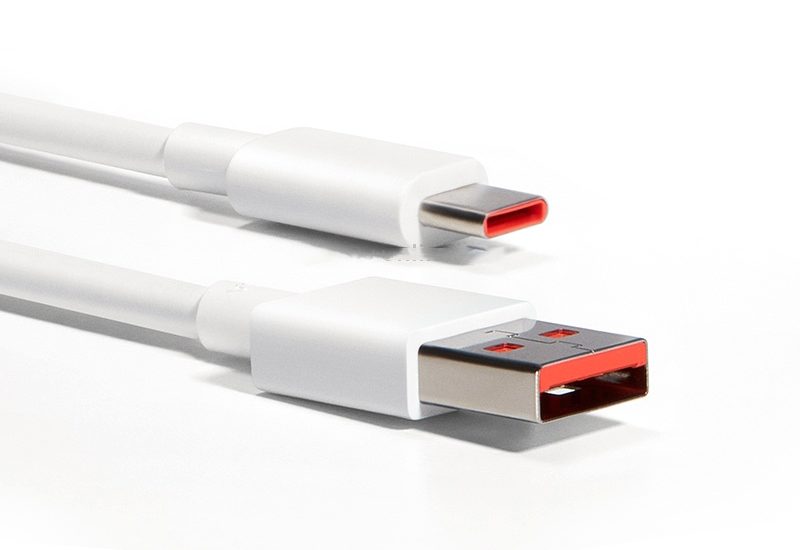In today’s digital age, charging cables are essential accessories that keep our devices powered and connected. With multiple types of cables available, such as Type C USB charging cables, USB to Type C cables, and Lightning to USB cables, it’s important to understand their differences and how to choose the right one for your needs. In this blog, we’ll explore these three types of charging cables, their features, and their uses to help you make an informed decision.

1. Type C USB Charging Cable
The Type C USB charging cable is the newest standard for USB connectors, known for its fast data transfer rates, higher power delivery, and reversible design. Here’s why it’s a great choice:
Reversible Design: Unlike older USB connectors, the Type C USB plug is reversible, meaning you can insert it either way up. This small but significant improvement makes plugging in much more convenient.
Fast Charging and Data Transfer: Type C cables support faster data transfer speeds and higher power delivery, making them ideal for fast-charging modern devices such as smartphones, tablets, and laptops. With Power Delivery (PD) technology, some Type C USB cables can provide up to 100W of power, which is enough to charge even larger devices like laptops.
Wide Compatibility: Type C USB charging cables are compatible with many devices, including Android smartphones, tablets, laptops, power banks, and some newer accessories. This versatility makes them a valuable addition to any tech setup.
2. USB to Type C Cable
The USB to Type C cable combines a standard USB-A connector on one end with a Type C connector on the other. This type of cable is particularly useful for those transitioning from older devices to newer ones.
Perfect for Compatibility: If you have an older power adapter or USB port (USB-A) and need to charge a newer device with a Type C port, this cable is the perfect solution. It allows you to connect a wide range of devices without needing a whole new set of accessories.
Data Transfer and Charging: While USB to Type C cables may not provide the same fast charging speeds as Type C to Type C cables, they still offer efficient charging and data transfer for most everyday needs. It is ideal for charging devices like smartphones, wireless earbuds, and other gadgets.
Durability and Convenience: High-quality USB to Type C cables are designed to be durable, with braided or reinforced exteriors that resist wear and tear. They are often available in various lengths, providing flexibility and convenience depending on where you need to connect your devices.
3. Lightning to USB Cable
The Lightning to USB cable is designed specifically for Apple devices, such as iPhones, iPads, and iPods, and is easily recognizable by its proprietary Lightning connector.
Optimized for Apple Devices: The Lightning to USB cable is the standard charging and data transfer cable for most Apple devices. It connects seamlessly with Apple’s ecosystem, including accessories like chargers, car adapters, and other peripherals.
Fast Charging Capabilities: When paired with a compatible power adapter, a Lightning to USB cable can deliver fast charging to your Apple device. For example, the cable supports up to 18W fast charging on the latest iPhone models, allowing you to charge up to 50% in just 30 minutes.
MFi Certification: When buying Lightning cables, look for the MFi (Made for iPhone/iPad) certification. This certification ensures the cable is designed to meet Apple’s performance standards, protecting your device from damage and ensuring a stable connection.
How to Choose the Right Cable
When selecting a charging cable, consider the following factors:
Device Compatibility: Ensure the cable is compatible with your device. For Apple devices, a Lightning to USB cable is a must, while Android and many other devices benefit from a Type C USB or USB to Type C cable.
Charging and Data Needs: If fast charging and quick data transfer are important to you, opt for a Type C USB cable or a Lightning to USB cable with fast charging capabilities. If you’re working with older ports or chargers, a USB to Type C cable might be more suitable.
Build Quality: Look for cables with durable materials, such as braided nylon or reinforced connectors, to ensure longevity. High-quality cables may cost more upfront but often save money in the long run by reducing the need for frequent replacements.
Length and Portability: Consider where you’ll be using the cable. If you need flexibility or have a long distance to reach a power source, choose a longer cable. For travel or on-the-go charging, a shorter, more portable option might be best.
Conclusion
Choosing the right charging cable—whether it’s a Type C USB charging cable, USB to Type C cable, or Lightning to USB cable—can significantly enhance your device’s charging and data transfer experience. Understanding your specific needs and the unique features of each cable type will help you make an informed choice, ensuring your devices remain powered and ready to go whenever you need them.